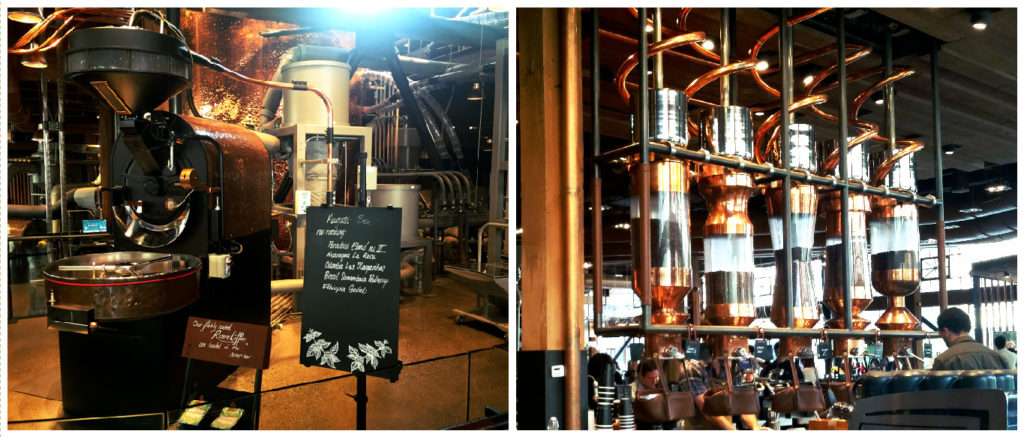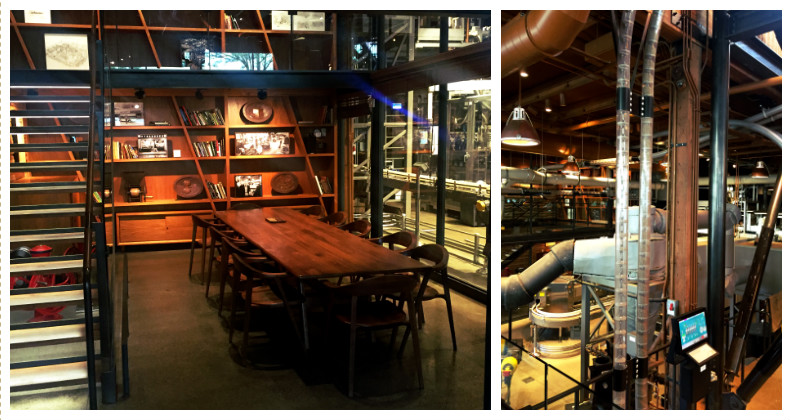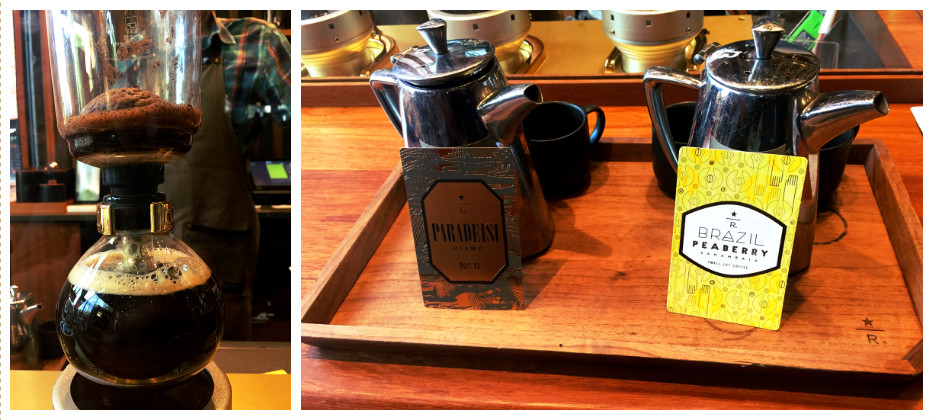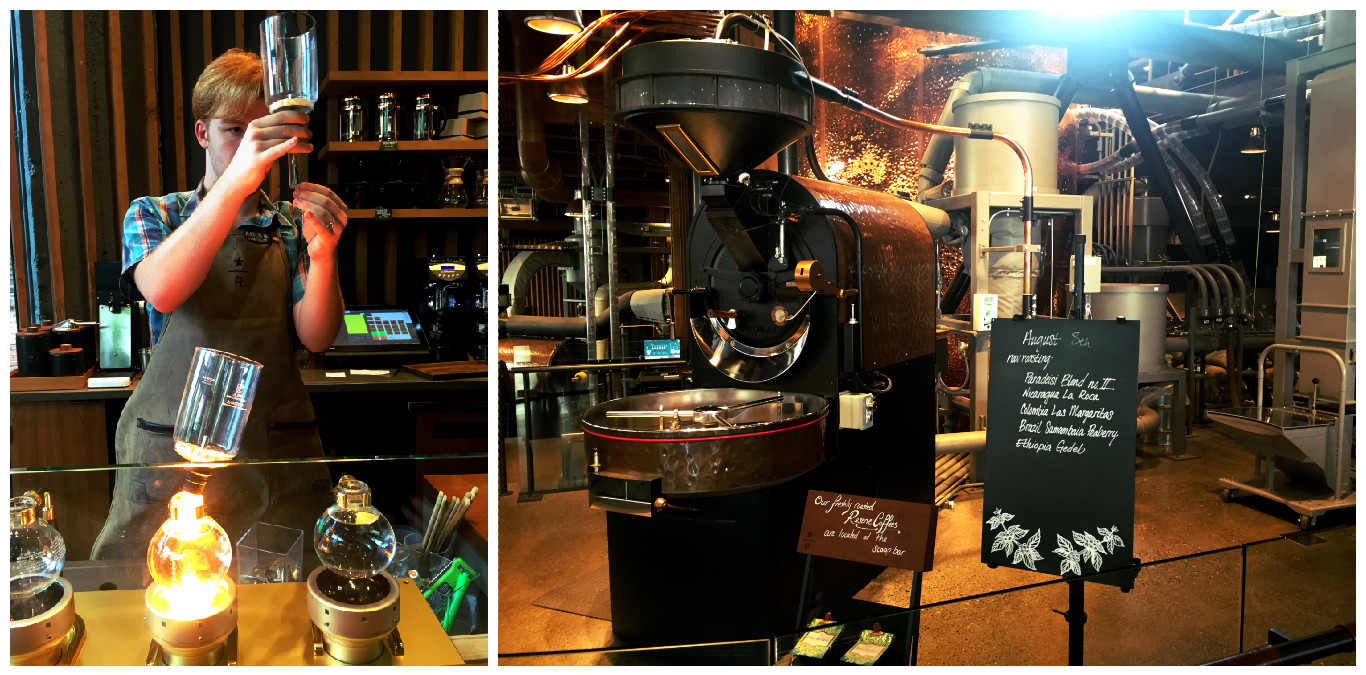Seattle might have many other coffee options that better feed the local and small business trends, but Starbucks was the one to lend momentum toward a national obsession with this morning drug.
Their Roastery & Tasting Room is an experience: it blends an homage to coffee with a fancy cocktail bar. The beans roasted here are in the top 1% of all Starbucks beans and often exclusive to this location.


See a video of some roasting action!
The place even has a coffee library that can be booked for meetings, complete with hundreds of titles on coffee!
The menu features such elaborate drinks as a nitro cold brew (a nitrogen infusion “brings out the coffee’s creamy natural sweetness”), flights of coffee (you can compare hot or cold brewing methods, bean origin, and enjoy truffle pairings), and even coffee ice cream floats (featuring a local acclaimed ice cream maker).
We enjoyed a tasting of the Siphon brew, “a highly visual experience of the original full-immersion brewing & vacuum filtration.”
The barista explained the whole process to us as he prepared our Siphon brews. He weighed exactly 385 grams of water to fill the round beaker-like container for the 25 grams of coffee grounds he’ll be using per 8 oz serving. He then places the beakers over a halogen light to heat up.
Watch a slowmo video of the halogen lamp heating water for the siphon brew.
This Siphon method was devised in 1840 by a scientist who didn’t want to leave the lab for a cup of coffee. It was the first filtered immersion method. Ever heard of “cowboy coffee”? I hadn’t, but apparently it’s how coffee was brewed in the majority of homes for a while. You could boil the coffee grounds for as long as you like (even for five hours, the barista said!) and use egg shells to clarify the water. If they had them, the coffeemakers of yore might even have added fish scales in for coffee “clarification.”
Dropped into a pot of coffee/grounds egg shells and fish scales can only seem to lead to scrambled coffee or even murkier muck.
Thankfully this system uses a filter even thicker than the coffee filters we’re used to. It even prevents the coffee’s oils from getting through, something making the siphon brewing method even more distinct from other methods.

Here we get a little visual demonstration of basic chemical principles.
Once the water is heated up with some bubbling, the top part is plugged in to the beaker part, creating an airtight seal, except for the small hole in the middle. As it gets hot and gases expand, the molecules move rapidly, taking up more space and pushing the water up to the container above the beaker where the coffee grounds get added.
The grounds for the siphon brew are even finer than espresso grounds and they brew in just 90 seconds. After the coffee has brewed, the halogen lamp gets turned off, the gases cool, slowing the movement of the molecules and creating a vacuum for the coffee to drop back down into the beaker chamber. The release of gases create a cute “poof” in the top container when the coffee brew is complete.

After tasting them, I thought these coffees were much smoother than coffee I’m used to having. The Brazil Peaberry in particular was like a coffee tea (in a great way!). The tasting notes were right, the citrus notes in the Paradeisi Blend No II lent themselves to a bit more acidity/bitterness, despite the oil being filtered out.
Even if you’re not a Starbucks fan, you’ll be impressed by the reverence they pay coffee at the Roastery.


OK Seattle I sure need to visit Coffee , coffee , coffee
You would love tastings in the Roastery!
I agree with Eve! Still need to visit! That siphon brewing method is facinating. I do simple cold brewed coffee, as is less acidic and smooth!